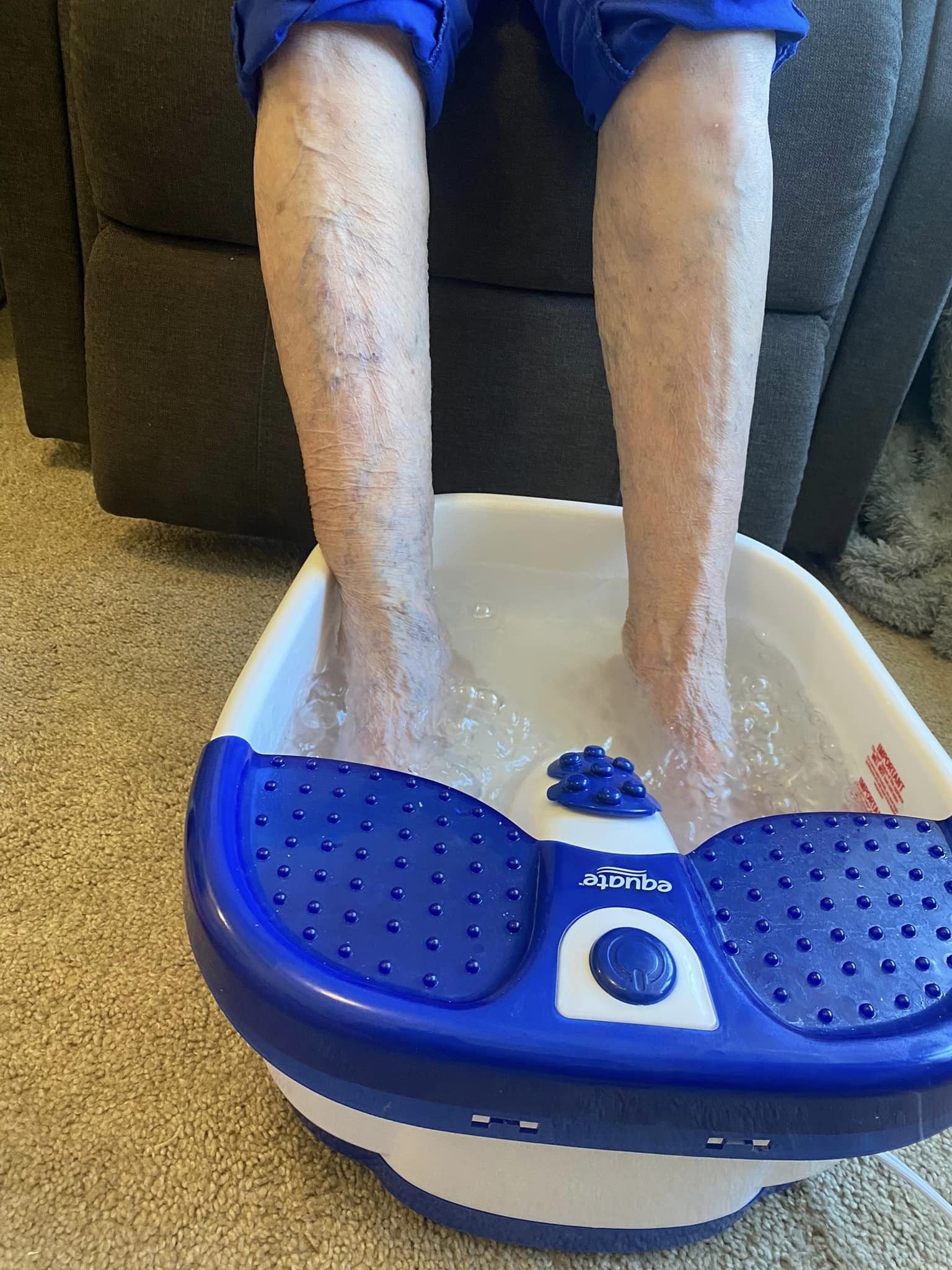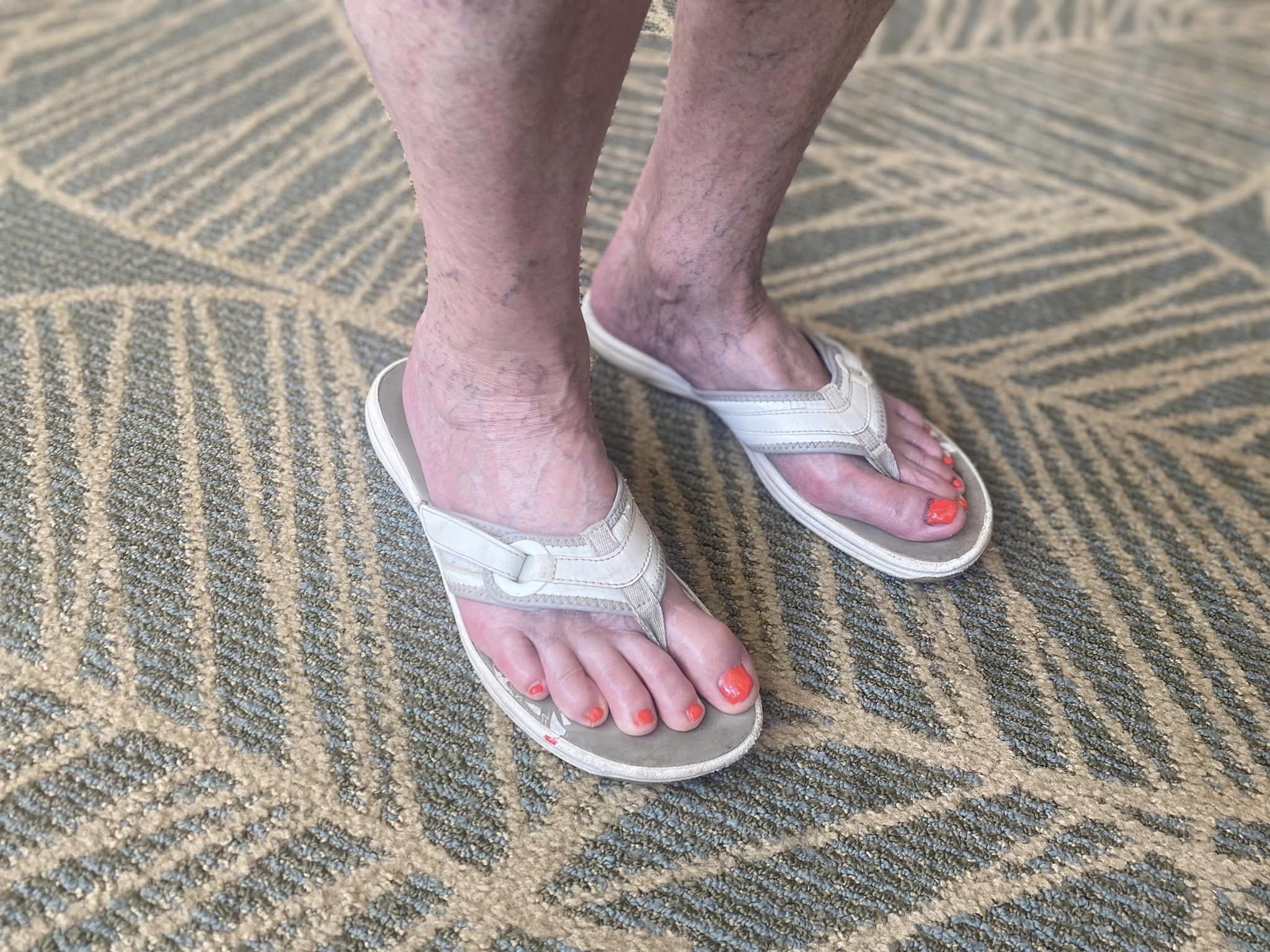7 Steps to Improve Senior Foot Care
According to the American Podiatric Medical Association, by the time you are 50 years old, you will have walked on average 75,000 miles.
In addition, as you age, feet naturally flatten and widen. Foot padding wears down, making bones and joints more easily susceptible to pain and in turn, reduces mobility.
Weakness, immobility, or pain in the feet can grow to other parts of the body, including the knees, hips, back and neck.
If you want to stay active and healthy, your feet should be a top priority. With a few quick exercises and daily routines, you will find that foot care is easier than you expected.
7 Steps to Improve Senior Foot Care:
Examine soles daily
Check for cracks, dryness, sores, wounds that aren’t healing, or discoloration. If you have any of these issues, contact your podiatrist.
Wear the right footwear
The American Podiatric Medical Association recommends shoes with enough toe flexibility to allow natural foot motion and heels that are stiff enough to provide support. Stiff, inflexible, cushioned footwear is not a protection — it limits your foot’s ability to naturally respond to your environment and often increases falls.
Stretch daily
Try rolling your feet on a ball, covering every inch until you get to your toes, for 2 minutes on each foot.
Try a seated calf stretch with a towel or resistance band.
Try wiggling your toes and moving your ankles up and down, in and out, for five minutes, two to three times a day.
Regular toenail trimming
Prevent ingrown toenails by regularly trimming your toes correctly (straight across and no shorter than the tip of your toe). Trim toes in a well-lit area and after a bath or shower so they are easier to cut. If you are prone to ingrown nails, go to your podiatrist to make sure your toes are cut correctly.
Change socks daily
Make sure your feet aren’t damp from sweat or a shower before putting on socks and shoes. Keep your feet moisturized with lotion or gentle soap daily.
Set alarms to wiggle your toes
Keep that circulation going! Prop up your feet when sitting and massage your feet. If you have diabetes, cardiovascular disease, or other health issues, you need to be extra mindful of your blood circulation.
Discourage heating pads
If your feet are cold, wear seamless socks to bed (remembering to change them every day and have dry feet before putting them on). Heating pads and warm water bottles can cause burns on feet.
A podiatrist meets with the residents of Canterfield once a quarter. She softens and cleans their feet, and sometimes gives medications to keep the residents balanced. In the day-to-day, our team personally works to be selective on footwear, encourages wearing socks, and occasionally puts lotion on the residents feet as well.
Canterfield foot treatments.
Feeling refreshed and restored!
Manicures while we’re at it!





